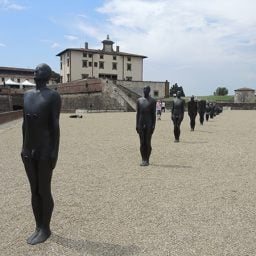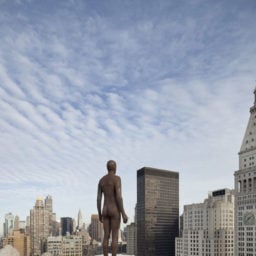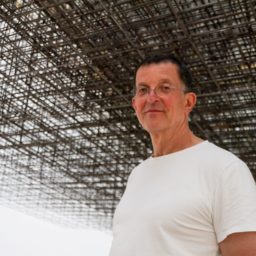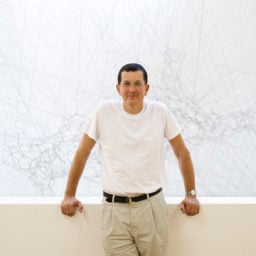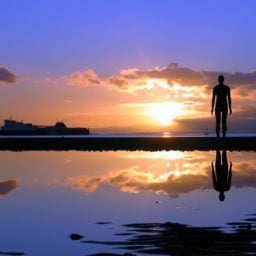

You may think you know Antony Gormley: He makes life-size sculptures based on casts of his own body, and over the years they have gotten increasingly abstract.
Even with their anonymous features, the human-shaped works carry an inviting, relatable air—but Gormley‘s rigorous, cerebral approach to creating this work goes far beyond the surface.
For the artist, the work is just as much about what’s not there—the body used to make the cast—than the physical object on view.
artnet News spoke to Gormley in May, on the occasion of his recent solo show at New York’s Sean Kelly Gallery. The artist spoke at length about creating his largest works yet, but also shared thoughtful insights about sex, pop culture, and the social meaning of art.
As the British artist celebrates his 66th birthday on August 30, here’s an opportunity to learn about what art means to Gormley personally, and what themes infuse his practice and life’s work.
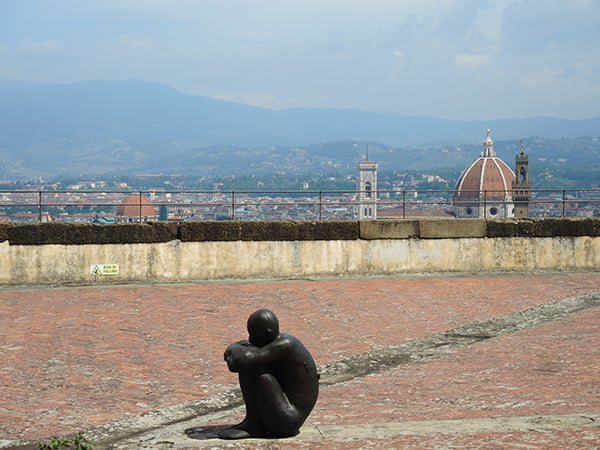
Antony Gormley, “Human,” at Fort Belvedere, Florence. Photo: Sarah Cascone.
1. On being an artist.
“Art is a gift, it’s a calling, it’s a vocation—it’s not a career. I’m so grateful I’ve been allowed to do the thing I love and people have helped me do that as a gift I’ve got a bit of talent—I’m not particularly talented; I’ve kind of kept at it for better or for worse.”

Antony Gormley, Another Place (1997). Photo: Wikimedia Commons.
2. On sharing.
“Until it’s shared, art has absolutely no meaning whatsoever.”
3. On ownership.
“What is art if it isn’t to be shared? What is art if isn’t a gift that only has meaning once it is given? Who asked for art to be privatized? It’s not in its nature. Art is the way that life expresses itself, and it’s always been shared.”
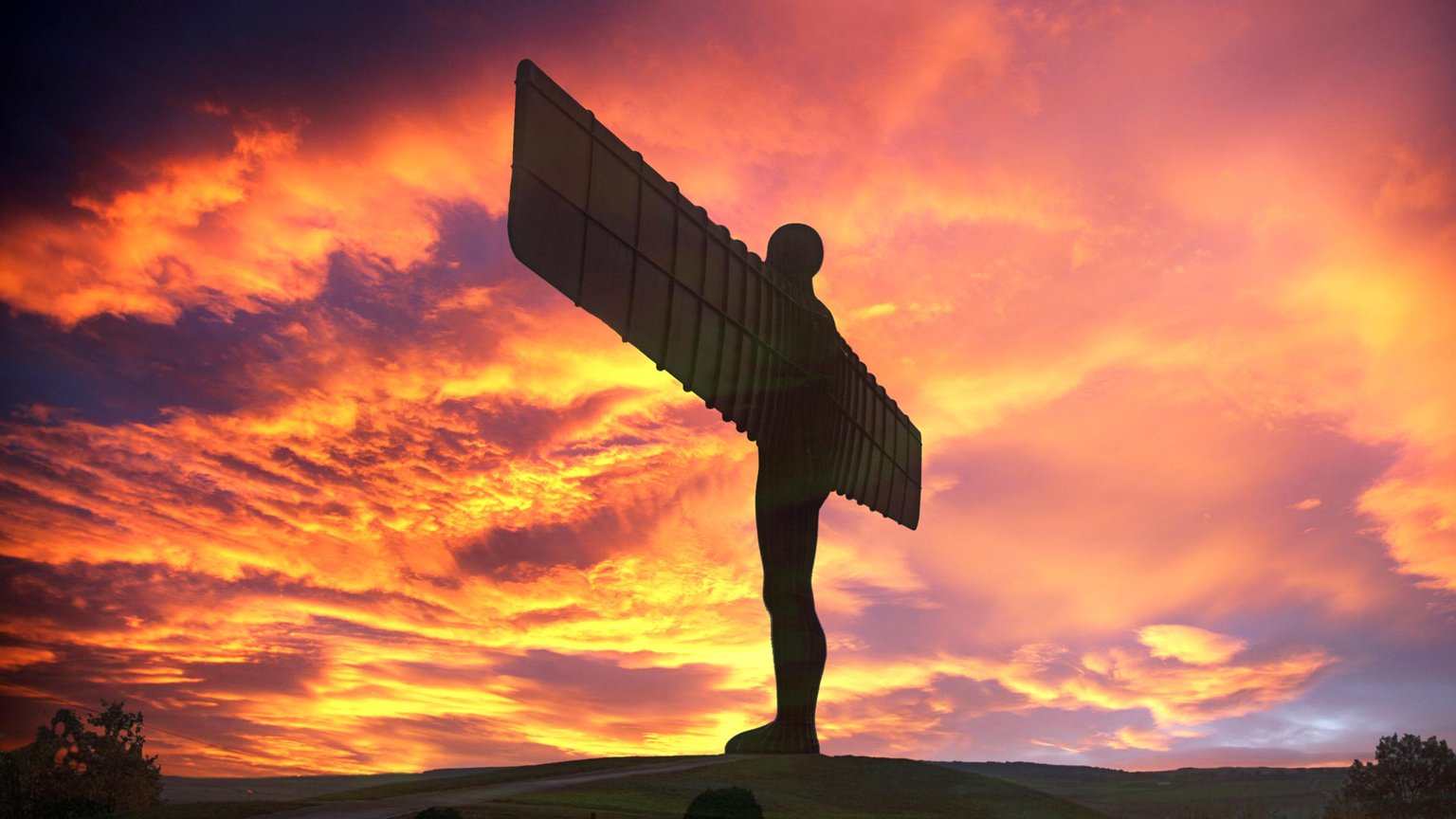
Antony Gormley, Angel of the North, 1994-8. © Antony Gormley and Gateshead Council.
4. On emotion.
I think of one of the most powerful things that art can do, is cause us to feel and to feel empathy.
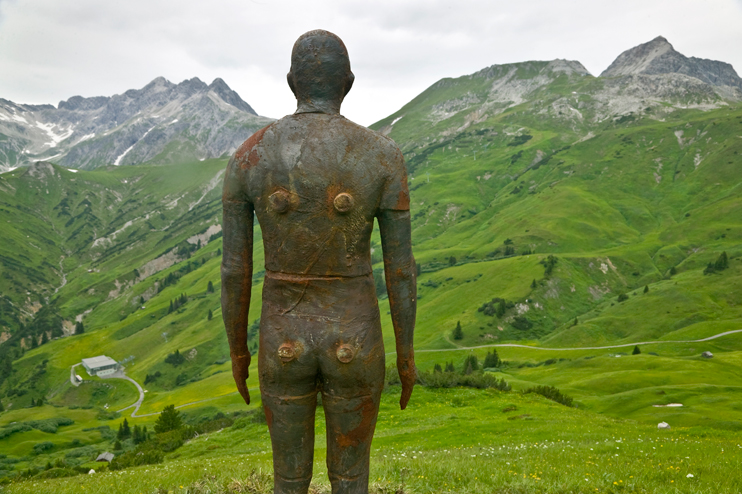
Antony Gormley Horizon Field August 2010 – April 2012.
Photo: Markus Tretter, courtesy of Antony Gormley und Kunsthaus Bregenz.
5. On sex appeal.
“Visual art is supposed to be exciting, it’s supposed to be distracting, it’s supposed to tell stories, and make us think and see things; perhaps excite our desire. There’s a lot of sex in art. I’m not really interested in that. There’s a lot of sex generally—and I’m not uninterested in sex—but it’s like, it’s commonplace.”
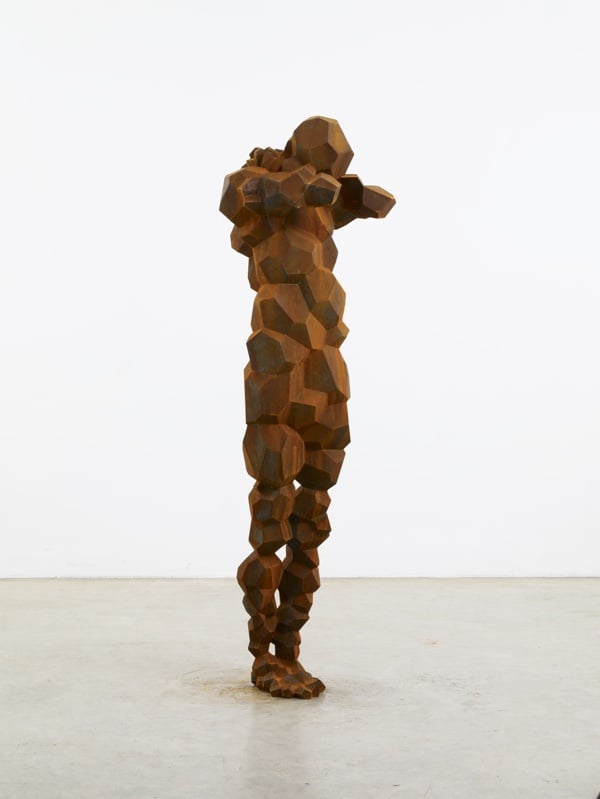
Antony Gormley, CUMULATE (2011). Courtesy photographer Stephen White, London/Sean Kelly, New York. © Antony Gormley,
6. On public art.
“I think the proof of the pudding is often in the exposure of the work in non-art contexts, and that’s certainly the kind of test site that I have continually returned to. So, the street, the mountain, the beach, places that have little to do with, as it were, the semantics or politics of the art world. Here I am showing in a gallery, it’s not that I’m against that, or don’t recognize its importance, but when I want to see how my working is working, it’s very good to see it on the side of an Alp.”
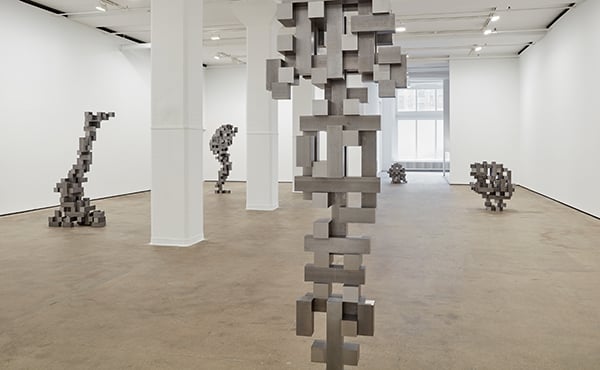
Installation view of “Antony Gormley: CONSTRUCT” at Sean Kelly, New York, with works from the “Big Beamer” series. Courtesy of photographer Jason Wyche and Sean Kelly, New York.
7. On pop culture.
“If I came to my work and I was expecting it to be like a statue or like a Jeff Koons, I think I would rightfully think it was not worthy of my attention. I’m not interested in twiddling cultural reference knobs… I’m not interested in spectacle. If that means people are not interested in what I do, I accept it.”

